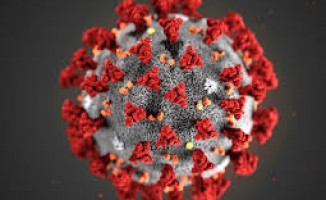
Largest study of cancer patients with COVID-19 provides guidance on how to protect this vulnerable population
People with cancer who develop COVID-19 are much more likely to die from the disease than those without cancer, according to physician-researchers at Montefiore Health System and Albert Einstein College of Medicine.
The study, published in the online edition of Cancer Discovery, is the largest so far to assess outcomes for patients with cancer who have also been infected with COVID-19.
"Our findings emphasise the need to prevent cancer patients from contracting COVID-19 and - if they do - to identify and closely monitor these individuals for dangerous symptoms," said Vikas Mehta, M.D., M.P.H., a co-lead author of the study, a surgical oncologist at Montefiore and associate professor of otorhinolaryngology - head and neck surgery at Einstein. "We hope that our findings can inform states and communities that have not yet been so severely struck by this pandemic about the unique vulnerability cancer patients face."
The study involved 218 cancer patients who tested positive for COVID-19 from March 18 to April 8, 2020 at Montefiore Medical Center in the Bronx, New York City, one of the regions in the United States hit hardest by the pandemic.
A total of 61 cancer patients died from COVID-19, a dramatically high case-fatality rate of 28%. (The mortality rate for COVID-19 in the United States is 5.8%, according to the World Health Organization.)
"A key element is that mortality appears to be more closely related to frailty, age, and co-morbidities than to active therapy for cancer," said co-senior author Balazs Halmos, M.D., M.S., director of the Multidisciplinary Thoracic Oncology Program at Montefiore and professor of medicine at Einstein.
"Our data suggest that we should not stop lifesaving cancer therapies, but rather develop strategies to minimise potential COVID-19 exposures and re-evaluate therapies for our most vulnerable cancer populations," explained co-senior author Amit Verma, M.B.B.S., director of the division of haemato-oncology at Montefiore and professor of medicine and of developmental and molecular biology at Einstein.
The time period during which these patients were treated was earlier in the epidemic when testing was almost exclusively done in sicker, symptomatic patients who required hospitalisation.
This may partially explain the high fatality rate within the study's cancer population.
However, even when compared to mortality rates in non-cancer patients at Montefiore and across New York City during the same time period, cancer patients demonstrated a significantly higher risk of dying from COVID-19.
As a group, COVID-19 patients with haematologic (blood) cancers, such as leukaemia and lymphoma, had the highest mortality rate: 37% (20 of 54 patients).
For patients with solid malignancies, the mortality rate was 25% (41 of 164).
Striking differences were observed among specific solid cancers: the mortality rate for patients with lung cancer was 55% and colorectal cancer was 38%, compared with mortality rates of 14% for breast cancer and 20% for prostate cancer.
Certain underlying conditions - older age, hypertension, heart disease, and chronic lung disease - were significantly associated with increased mortality among cancer patients with COVID-19.
A detailed analysis of patients with cancer who died from COVID-19 shows that more than half of these individuals - 37 of 61 - had been in places with a higher risk of exposure to COVID-19, such as nursing homes, hospitals or emergency departments within the 30 days before being diagnosed with COVID-19.
This was before widespread social distancing had been implemented.
Montefiore has already changed clinical practice as a result of the study's findings, by using telemedicine and early and aggressive social distancing for cancer patients, and by opening a dedicated cancer outpatient and inpatient clinical service.
It has also instituted bilingual peer counselling and deployed social workers and food deliveries to its at-risk population.
Montefiore is able to quickly identify patients with a known history of cancer who test positive for COVID-19 based on a daily collection and collation of data across the health system.
This allows the care team to act immediately to ensure appropriate care for these individuals and track outcomes.